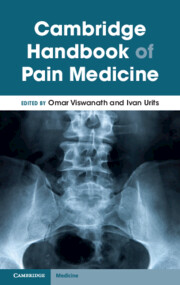Book contents
- Cambridge Handbook of Pain Medicine
- Cambridge Handbook of Pain Medicine
- Copyright page
- Contents
- Contributors
- Pain Handbook Introduction
- Part I Introduction to Pain: Pain Signaling Pathways
- Part II Common Categories of Pharmacologic Medications to Treat Chronic Pain
- Chapter 4 Nonsteroidal Anti-inflammatory Drugs (NSAIDs)
- Chapter 5 Acetaminophen
- Chapter 6 Topicals
- Chapter 7 Muscle Relaxants
- Chapter 8 Opioids
- Chapter 9 Antineuropathic Medications
- Chapter 10 Cannabinoids
- Part III Chronic Pain Conditions Head and Neck
- Part IV Spine
- Part V Extremities
- Part VI Misc
- Part VII Adjunctive Therapy
- Index
- References
Chapter 5 - Acetaminophen
from Part II - Common Categories of Pharmacologic Medications to Treat Chronic Pain
Published online by Cambridge University Press: 01 December 2023
- Cambridge Handbook of Pain Medicine
- Cambridge Handbook of Pain Medicine
- Copyright page
- Contents
- Contributors
- Pain Handbook Introduction
- Part I Introduction to Pain: Pain Signaling Pathways
- Part II Common Categories of Pharmacologic Medications to Treat Chronic Pain
- Chapter 4 Nonsteroidal Anti-inflammatory Drugs (NSAIDs)
- Chapter 5 Acetaminophen
- Chapter 6 Topicals
- Chapter 7 Muscle Relaxants
- Chapter 8 Opioids
- Chapter 9 Antineuropathic Medications
- Chapter 10 Cannabinoids
- Part III Chronic Pain Conditions Head and Neck
- Part IV Spine
- Part V Extremities
- Part VI Misc
- Part VII Adjunctive Therapy
- Index
- References
Summary
Over-the-counter analgesics, including NSAIDs and acetaminophen, are often the first-line medication for nonspecific low back pain (LBP). Current guidelines recommend their use as the initial treatment for LBP. In addition to these medications, antidepressants, muscle relaxants, and opioids can also be effective treatments for chronic LBP. Acetaminophen, which is also known as paracetamol internationally, is commonly used for its pain-relieving and fever-reducing properties. Although the mechanism of action is not fully elucidated, acetaminophen is known to inhibit cyclooxygenase (COX-1 and COX-2), resulting in inhibition of prostaglandin synthesis. It works by lowering body temperature during fever and inhibiting the activity of COX-3, resulting in analgesic and antipyretic effects. Para-acetyl-aminophenol (acetaminophen) acts as a reducing agent and inactivates the oxidized cyclooxygenase enzyme. Nonsteroidal anti-inflammatory drugs (NSAIDs), on the other hand, are more effective for LBP due to their superior anti-inflammatory effects. They are often compared to acetaminophen or used in combination for LBP treatment.
- Type
- Chapter
- Information
- Cambridge Handbook of Pain Medicine , pp. 44 - 48Publisher: Cambridge University PressPrint publication year: 2023



